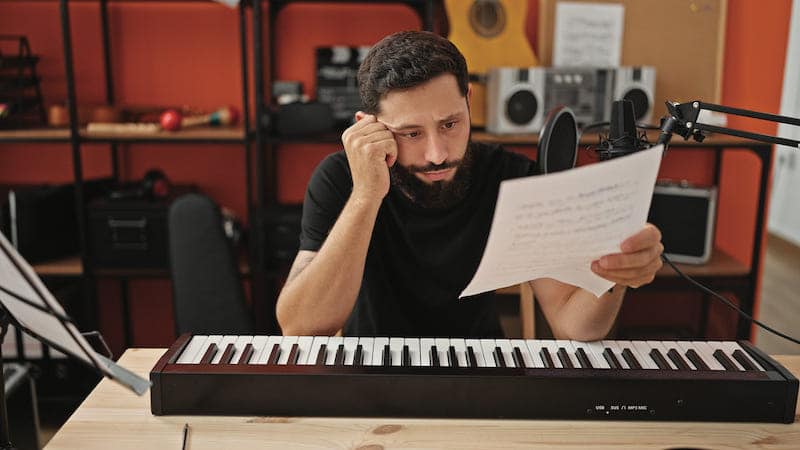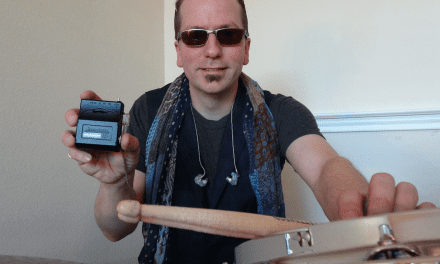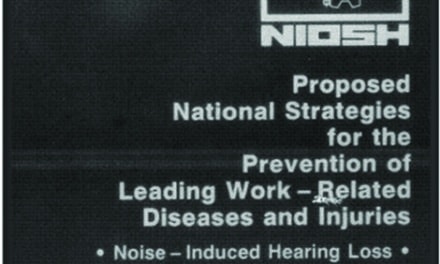By Marshall Chasin, AuD
For those of us who are old enough to remember the 1960s, newspaper articles were rife with headlines such as “Stress is the big killer.” At that time, scientists were referring to the deleterious effects of stress on the heart, liver, and kidneys, but over time we have come to learn about the more “subtle” effects of stress on our bodies.(1)
A number of well-designed studies have historically shown increased levels of temporary threshold shift (TTS) with human subjects when they are stressed in various ways.(2-3)
And in 2009 and 2010, a pair of articles were published that delineate how stress can have subtle effects on the auditory system. Authors Miller, Maletic, and Raison(4); and Szydlowska and Tymianski,(5) respectively, referred to this as glial excito-toxicity, and identified swelling of the auditory nerve fibers, loss of afferent connection, and auditory cortex dysfunction that may be responsible for many suprathreshold issues such as hearing difficulties in noisy environments.
The short form of this physiological process is this:
- Stress causes the release of the stress hormone cortisol.
- Through a series of biochemical processes, cortisol creates higher concentrations of glutamate in the brain and auditory cortex.
- High levels of glutamate can be ototoxic and has been implicated in cell death and other subtle auditory features and dysfunction, in part related to calcium ions that enter the cells resulting in depolarization.
At the molecular level, the damage caused by high levels of noise is equivalent to damage caused by high levels of glutamate, exacerbated by stress. While sound level and duration of exposure are primary reasons for music and noise induced hearing loss, stress can be a significant secondary effect.
Many people in the performing arts community work as part-time workers in the “gig economy.” Statistics indicate that, on average, these performing artists earn less than $20,000 per year and barely live at the subsistence level. Food, rent, and other necessities of life are not guarantees and, while music performance can be quite rewarding, needless to say, it can also be stressful. Couple that with society’s general ambivalence toward musicians, and it’s no wonder that many parents try to steer their children away from a career in music.
Further reading: Helping Cochlear Implant Recipients Improve Their Relationship with Music
Hearing loss prevention with musicians therefore becomes more than just a hearing loss prevention issue, but a mental health issue as well. While it is important to provide and verify the best uniform version of hearing protection that will not alter the characteristics of music, it is also important to bring issues related to stress into question. And this is especially true for clinical complaints of bothersome tinnitus.(6) It is incorrect to assume that the tinnitus experienced by a 75-year-old person with a significant hearing loss is the same tinnitus that a 20-year-old experiences with essentially normal peripheral auditory function. Counseling regarding stress reduction should be the primary approach with these younger patients.(7)
Stress reduction can come in many forms and there is no one approach that is best for all. It may be physical exercise or it could be watching 1940s film noir movies. The New Orleans Musicians’ Clinic (https://neworleansmusiciansclinic.org) offers many programs and services that address both stress reduction as well as financial- and stress-related issues. Two websites from the Musicians’ Clinics of Canada (www.MusiciansClinicsOfCanada.com and www.MusiciansClinics.com) also offer many services that address these issues. A referral to physicians and/or other mental healthcare professionals is essential for the hearing health of some musicians.
In jurisdictions where cannabinoids (CBD) are legal such as in Canada and, as of the writing of this article, if medically warranted, in 38 U.S. states and three U.S. territories as well as in the District of Columbia,(8) the use of low-dose THC (< 4mg/dose), but higher-dose cannabinoid (CBD) (20-40 mg/dose) can be useful for stress reduction as well as a number of other stress-related pathologies and injuries.(9)
Stress is a multi-faceted phenomenon and has wide-spread effects on the human body, including our auditory function. Occupational groups such as musicians are uniquely subject to many sources (both societal and financial) of stress, and multi-faceted solutions are in order.
Marshall Chasin, AuD, is an audiologist and the director of auditory research at the Musicians’ Clinics of Canada, adjunct professor at the University of Toronto, and adjunct associate professor at Western University. You can contact him at [email protected].
Original citation for this article: Chasin M. Addressing Music and Stress. Hearing Review. 2024;31(1):26.
Photo: Dreamstime
References:
- Elson LE. Performing Arts Medicine, 1st ed. St. Louis, Mo: Elsevier; 2019: chapter 5.
- Hörmann H, Mainka G, Gummlich H. Psychological and physiological reactions to noise of different subjective valence (TTS and EMG). Psychol Forsch. 1970;33(4):289-309. doi:10.1007/BF00424556.
- Lindgren F, Axelsson A. Temporary threshold shift after exposure to noise and music of equal energy. Ear Hear. 1983;4(4):197-201. doi:10.1097/00003446-198307000-00004.
- Miller AH, Maletic V, Raison CL. Inflammation and its discontents: the role of cytokines in the pathophysiology of major depression. Biol Psychiatry. 2009;65(9):732-741. doi:10.1016/j.biopsych.2008.11.029.
- Szydlowska K, Tymianski M. Calcium, ischemia and excitotoxicity. Cell Calcium. 2010;47(2):122-129. doi:10.1016/j.ceca.2010.01.003.
- Chasin M. Two flavors of tinnitus. Hearing Review. 2023:30(10);32-33.
- Basso L, Boecking B, Neff P, Brueggemann P, Peters EMJ, Mazurek B. Hair-cortisol and hair-BDNF as biomarkers of tinnitus loudness and distress in chronic tinnitus. Sci Rep. 2022;12(1):1934. Published 2022 Feb 4. doi:10.1038/s41598-022-04811-0.
- National Conference of State Legislatures. State Medical Cannabis Laws. Nov. 2, 2023. Available at: https://www.ncsl.org/health/state-medical-cannabis-laws#:~:text=Medical%2DUse%20Update,medical%20use%20of%20cannabis%20products
- Cottrell K and Chong J. Impact of medical cannabis on recovery from playing-related musculoskeletal disorders in musicians: An observational cohort study. Presented at the proceedings of Canadian Pain Society, and proceedings of Performing Arts Medicine Association Symposium; 2002. Available at: https://static1.squarespace.com/static/647911b8655ff578fecb5b7d/t/64873b453aea7532170f7ca1/1686584137142/Musicians+Clinics+Cannabis+Research+Presentation.pdf





